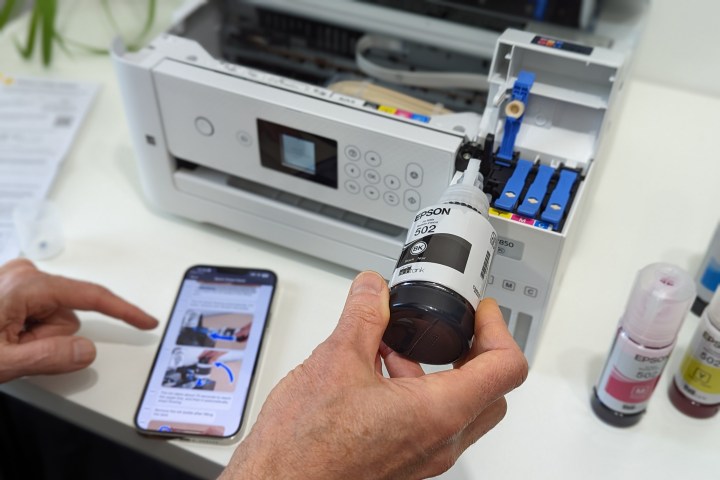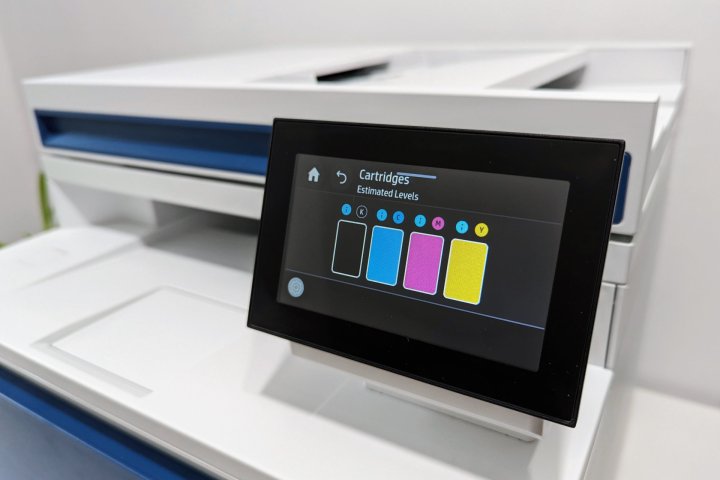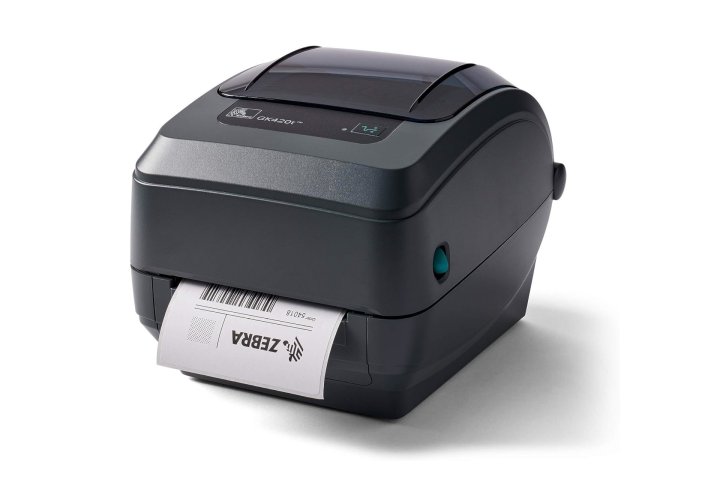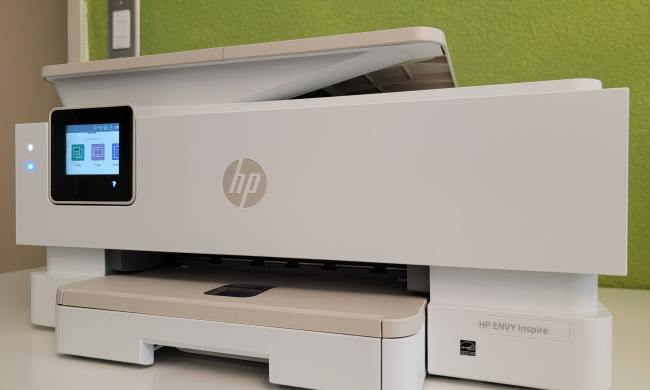The cost of ink is a hidden factor that’s important to consider when shopping for a printer. An inkjet printer with all the features you need at a budget price might not really be as good a deal as it seems.
Even if cartridge costs aren’t that high, the accumulated expense of replacing them frequently could add up to more than you’d pay for a printer that seems more expensive.
How much is printer ink?

The cost of ink varies by manufacturer, model, and type. A monochrome printer has a single cartridge, while color printers use at least two cartridges and sometimes as many as ten different colors.
Printers that are designed for photo-quality printing use extra hues and shades to smooth gradations and match tones more accurately. That optimization yields great results but means you’ll have to buy several special ink cartridges to keep the printer running.
On average, you’ll pay about $25 for a black cartridge and $35 for each color cartridge. A high-capacity cartridge contains more ink and lasts longer, but it might cost up to twice as much. These extra-large or XL cartridges typically have a lower cost per page (CPP).

A laser printer uses toner, which is more economical than ink in terms of CPP. However, it requires a bigger up-front investment. Toner cartridges have an average cost of $80. Black and color cartridges are priced similarly, but black usually lasts longer.
Some printers have an option for high-capacity toner. As with ink, XL toner cartridges have a better CPP but a higher initial cost.
Our printer reviews generally provide CPP since it’s such an important detail. You can calculate the cost per page easily by looking up the cartridge on the printer manufacturer’s website. Divide the price by the yield, and the result will be the CPP in dollars. Divide that by 100 to get the CPP in cents.
The yield is the estimated number of pages you can print before a new ink or toner cartridge runs out. The yield is often different for black and color cartridges, but the yield is usually the same for each color cartridge.
What’s the Most Economical Printer Type?

There are several types of printers, and some are much more economical than others. Beyond inkjet and laser, there’s a choice between monochrome and color, as well as cartridge and tank. The most economical is a tank printer.
Tank printers like the Epson EcoTank ET-2850 don’t use cartridges, eliminating the added manufacturing cost, so you only need to pay for the ink itself. This is the secret to the incredibly low CPP of a tank printer. Each bottle of ink can print over a thousand pages, reducing page cost to a fraction of a cent, even for color prints.
Monochrome laser printers are the second most affordable when you only need to print black-and-white documents. The typical CPP for a black-and-white laser printer is two to three cents per page. Laser printers are fast, and a single toner cartridge can output hundreds, sometimes thousands of documents. Before tank printers existed, laser printers were the optimal choice for long-term savings.

Color laser printers are fast, durable, and economical for printing in black, matching a monochrome laser. For color documents, the CPP can be just as expensive as some cartridge-based inkjet printers. You can expect to pay about 12 cents per color page on average.
Inkjet printers are versatile, offering nice photo prints as well as document printing. The devices are small and usually a nice, low price. There are tradeoffs, however. Durability is an issue with cheap printers, but ink costs will be your immediate concern. That generally has to do with the yield of the cartridge.
A standard cartridge might have a CPP of seven cents for black and 14 cents for a color document, while a high-capacity cartridge can be as little as two cents for a black-and-white document and seven cents for color.
Some inkjet printers jamb all three colors into a single cartridge, which sounds convenient but raises the color cost even higher. It’s impossible to estimate the CPP in a general sense because it depends on how evenly balanced your color usage is. For example, it would be possible to use all of the cyan ink while the magenta and yellow remain full. You’d have to replace the tri-color cartridge wasting two-thirds of the ink.
There’s an inherent cost to manufacture, ship, and store cartridges — that’s why yield is so important. Since a high-capacity cartridge contains more ink, it’s more economical and less wasteful.
Other options

There are other options for special purposes. For example, if you only need to print receipts, labels, or barcodes, a thermal printer might suffice.
A direct thermal printer doesn’t use ink or toner. Instead, thermal paper is heated to imprint text and graphics. Another type uses thermal ribbons for prints that are more durable.
There’s a reason retail stores use thermal printers for receipts. Ongoing costs are very low. However, the paper size is typically small, while the price of the printer is relatively high.
Which is right for you?
CPP is important, but you need a printer that matches your usage. If you need to print color but don’t print often, a cartridge-based inkjet could be the right choice. The best inkjet printers are affordable and offer XL cartridges to keep costs low.
If speed is important, a color laser printer will match the CPP of a good inkjet (read about other differences in our laser printer versus inkjet comparison) while rolling through long documents and copies much faster.
If you only print black-and-white documents or want an alternative to your inkjet, a monochrome laser is hard to beat. They’re durable and efficient.
If none of the above fits your usage, a tank printer is the most economical and versatile, providing the best value when you know you’ll be printing often.



